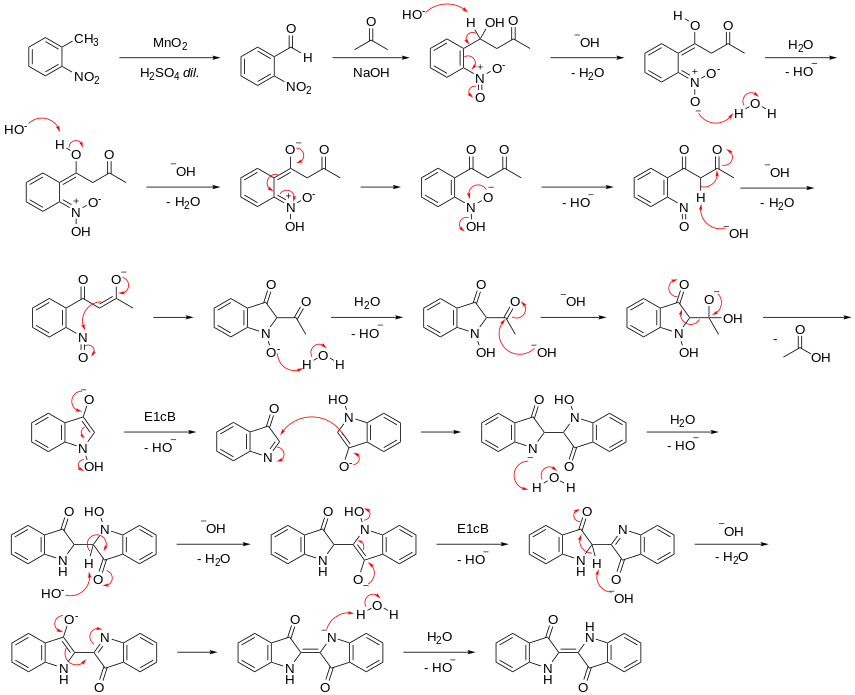The Baeyer–Drewsen indigo synthesis (1882) is an organic reaction in which indigo is prepared from 2-nitrobenzaldehyde and acetone The reaction was developed by von Baeyer and Viggo Drewsen [da] in 1880 to produce the first synthetic indigo at laboratory scale. This procedure is not used at industrial scale.

The reaction is classified as an aldol condensation. As a practical route to indigo, this method was displaced by routes from aniline.
Mechanism

Note
In the English literature this reaction is sometimes called Baeyer–Drewson reaction, although the author of the original paper was spelled Drewsen.
References
- Adolf Baeyer, Viggo Drewsen (1882). "Darstellung von Indigblau aus Orthonitrobenzaldehyd". Berichte der deutschen chemischen Gesellschaft. 15 (2): 2856–2864. doi:10.1002/cber.188201502274.
- Helmut Schmidt (1997). "Indigo – 100 Jahre industrielle Synthese". Chemie in unserer Zeit. 31 (3): 121–128. doi:10.1002/ciuz.19970310304.
- "Johannes Pfleger, Chemist". Evonik Industries. Archived from the original on 2014-05-24. Retrieved 2022-12-04.
- Elmar Steingruber "Indigo and Indigo Colorants" Ullmann's Encyclopedia of Industrial Chemistry 2004, Wiley-VCH, Weinheim. doi:10.1002/14356007.a14_149.pub2